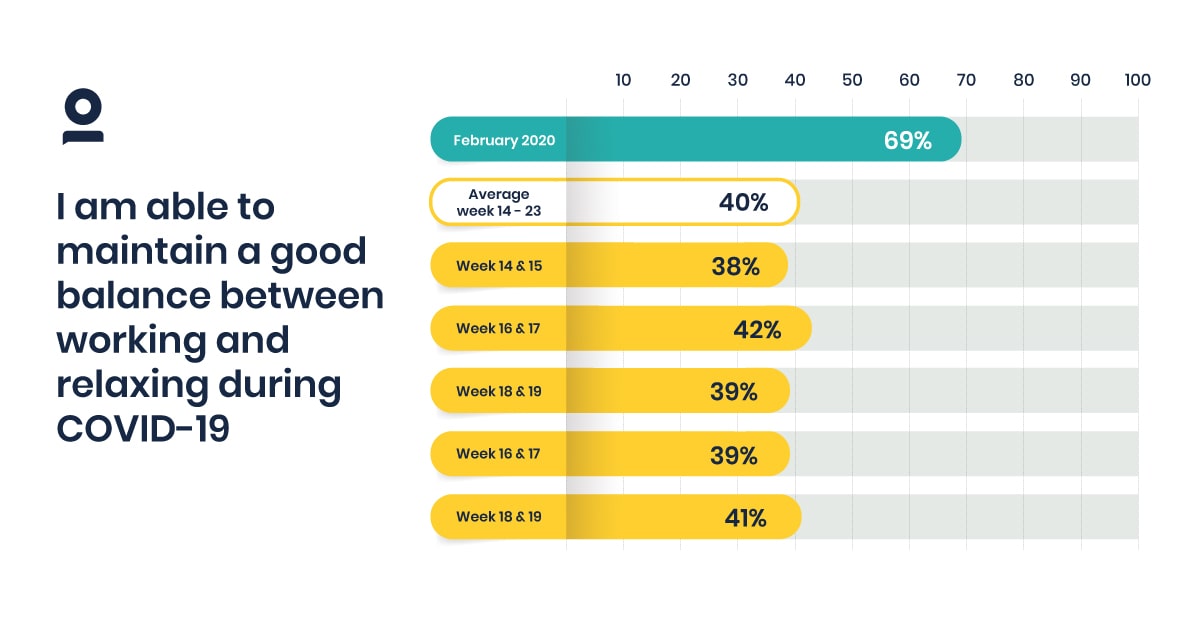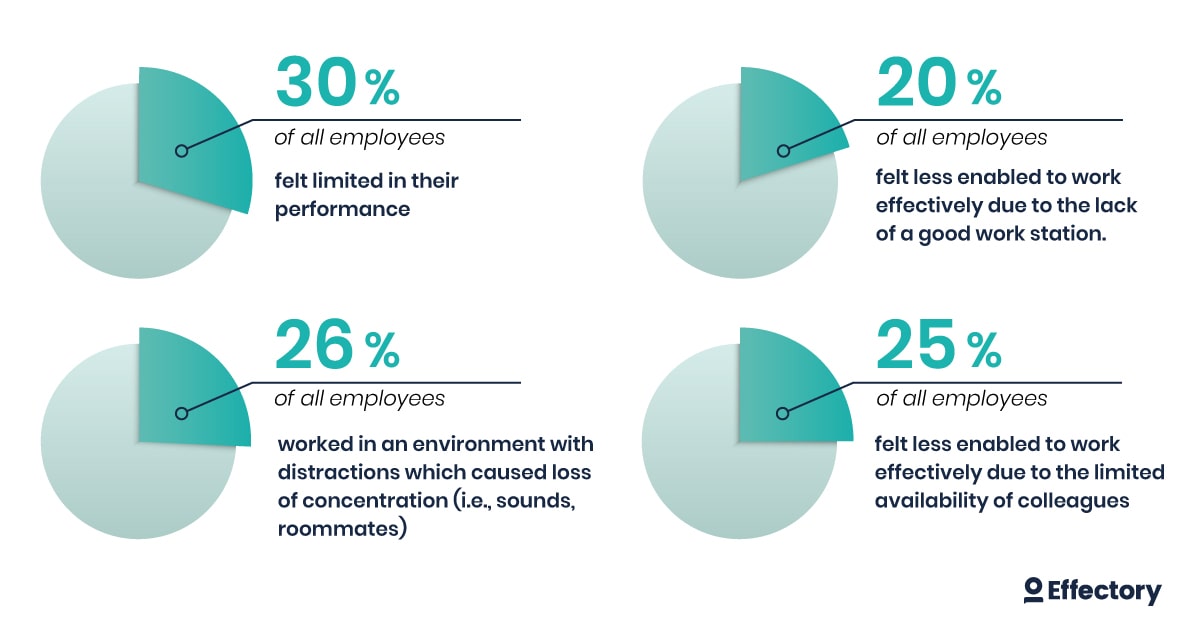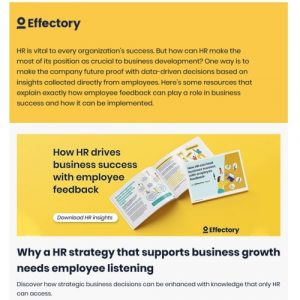At many organizations, employees are still largely working from home. These organizations will need their employees more than ever this fall but will have to face a number of challenges. Here are just a few examples:
Eight essential questions about employee productivity

1. How resilient are employees?
Many organizations have encouraged their employees to use their leave this summer. However, it’s hard to know if their employees really got any rest during their vacations. In addition, some employees have a home situation that hampers their productivity and output. On top of this, many people are wondering when this whole situation will finally be over. They can see winter on the horizon and feel a huge sense of hopelessness. Some employees have also started to develop psychological problems.
Download the Employee Experience Review
Discover how employees around the world are experiencing different parts of the employee journey and how this affects the employee experience.
Download2. How long can employees keep this up?
Employees have been under a significant amount of stress for months. If you suddenly have to work and relax in the same space, it can be difficult to find a good balance between the two. Effectory Pulse surveys of 123,000 employees across Europe have revealed that a mere 40% of employees have managed to maintain a good work-life balance in recent months. The remaining 60% are more likely to experience burnout. It is therefore important to find out whether employees are coping with the current situation, and how long they will be able to keep it up.
3. How is the workload distributed?
It is difficult to find out how workloads are distributed when working remotely. Before the COVID-19 crisis managers saw everyone all day long. That meant you could automatically tell how things were going. Managers could see who could take on a little more work, who needed a break and who was almost at their limit. Now it’s difficult to get an idea of everyone’s needs. Managers are starting to feel powerless and don’t know how to manage their teams because they can’t see how their teams are doing. When working remotely, knowing how employees are doing is harder.

4. What is limiting employee performance?
Production has been down for many organizations in recent months, sometimes by a significant amount. It’s not always easy to find out why this is. Are employees secretly taking a break on the clock? Or are people ready and willing but can’t get on with things because communication lines are blocked? How big an impact does the home situation of your employees have? Are employees aware of what is expected of them? Are roles and goals clear? It is difficult to tell when working remotely.
5. Are your employees still enthusiastic?
Passionate employees are the driving force behind an organization’s success. Having motivated employees who want to engage positively with the company’s mission really makes the difference. However, several aspects of the current crisis can make employees feel less passionate about their work. For example, many organizations currently lack the kind of engaging direction that makes employees enthusiastic about working for you. Old strategic goals have often been abandoned and few have been replaced. As a result, employees are starting to wonder what the point of it all is.
In addition, reduced contact with colleagues and customers has completely changed the face of some jobs. Employees who used to see and collaborate with a lot people are now sitting alone in the attic or at the kitchen table and finding work less fun. In which teams and jobs is enthusiasm suffering the most? What is needed to re-motivate and involve these employees in the organization’s goals? When working remotely, it can be difficult to identify these issues in time, particularly for larger organizations.
6. Are all employees on the same team?
Before the crisis, walking into the office gave employees the feeling that they belonged to an organization. Now, however, employees are increasingly feeling like they are just tools. They miss personal contact with their colleagues. They sometimes feel lonely or uncertain about their position. Social gatherings are an important part of the culture in many organizations, but these are now largely gone. This is not only bad for maintaining a feeling of engagement; it also makes it more difficult to identify collaboration problems and keep moving forward.

7. Is the organization’s culture still alive?
In the past, you could get a pretty good idea of the office atmosphere and standard of collaboration from how people came into the office, the tone of their conversations at the coffee machine and who they went to lunch with. All of these informal things came together to create the organization’s culture. Remotely, however, it is much more difficult to get a good idea of what subcultures are forming, whether employees are working well together and whether they feel comfortable at your organization. It is very difficult to keep an eye on these things.
8. What do employees think about how you communicate?
Since people are largely working from home, many organizations are remotely sending out emails full of meaningless statements about their employees. They don’t have a precise idea of how this stream of messages is coming across and what impact it is having. If something doesn’t go down well, it is impossible for them to tell or do anything to correct it. In a face to face conversation you can say: I can see that I’m losing you, is everything alright? Employees want to be heard and taken seriously. Organizations that continue to panic and spout meaningless statements about employees will be affected the most by weakening motivation during this crisis. Good crisis management is essential for productivity. But what do your employees think of this communication? It is important to find out.
Receive the best HR articles in your mailbox
Subscribe to our newsletter and you will receive the best HR articles on a quarterly basis.
Sign upThe new reality
We have to accept that this situation will continue to be the norm for the time being. I honestly thought it would be over by September, but that is not the case. The coming months will be crucial to the viability of organizations in the future. It’s vital that your teams approach their work in a constructive, positive, solution-oriented and innovative way. That’s why it is important to ask target groups targeted questions on a regular basis to find out exactly what’s going on, in which teams and which jobs. More and more organizations have discovered the power of Employee Listening: a holistic approach to obtaining and implementing employee feedback throughout their “employee experience”.
Employees want to be heard and taken seriously. Listening to them will be more important than ever this fall. I am proud that we are paving the way as the European market leader and that we are helping many organizations to get through this difficult time.
Book a free demo. See our solutions in action.
Effectory is Europe’s Leading provider of Employee Listening Solutions. Schedule a product demo and discover how to enhance your employees’ engagement.
Demo request

